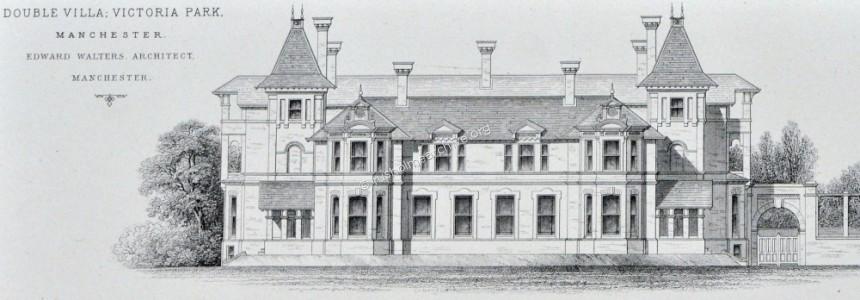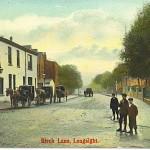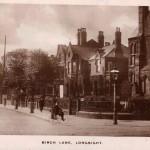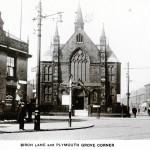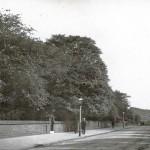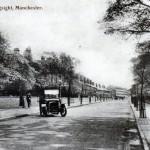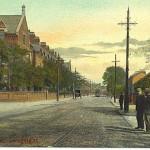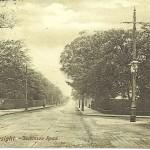Rusholme & Victoria Park Archive
King George V and Queen Mary
A provisional programme for a 7 day visit to Lancashire by King George V & Queen Mary was planned in Feb 1913 with the detailed arrangements for a tour of Manchester & Salford being on the last day, the 14th July 1913.
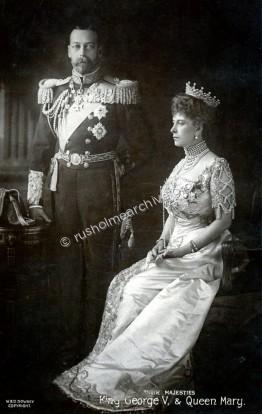
Manchester Corporation considered the visit so important that the Privy Council was persuaded to make the day in Manchester & Salford a Bank Holiday. Consequently the Corporation staff were awarded a day off work with pay and the school-children that took part were also given chocolate at the expense of the Corporation.
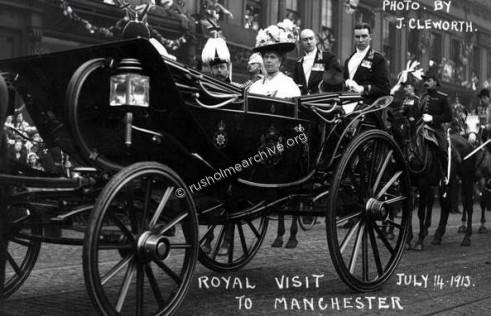
The photograph above is of the King and Queen in their carriage. I appreciate being given permission to reproduce this photograph from the Manchester Library 'Images' collection.
Part of the itinerary included Rusholme where fifty thousand children sang to the Royal procession that stopped both in Birchfields Park & Platt Fields Park.
The route that might interest visitors to the Rusholme archive started as the Royal procession left Plymouth Grove and then proceeded along Birch Lane, right into Dickenson Road and then to Birch Park. The photographs below are of the visit all of the way from Plymouth Grove/Birch Lane junction to Birch Park. If you click on the first image and then the arrow displayed to the right of the picture you can follow the correct sequence.
Birchfields Park entrance, (below).
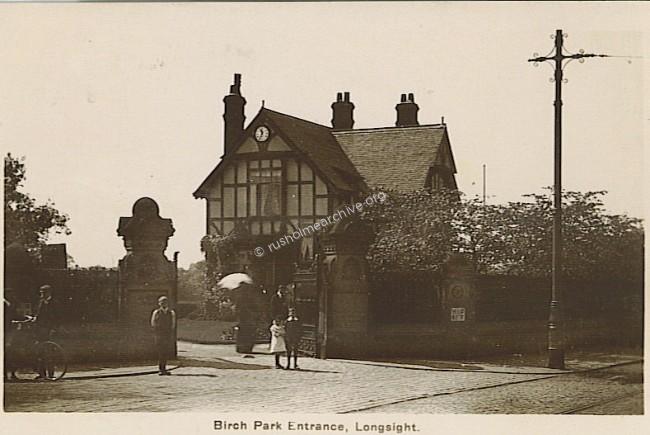
In Birch Park 25,000 children were present together with 1000 women and 800 men from the Red Cross league.
The photograph below of the King and Queen is dated 23rd July 1913. The note on the card refers to the Royal couple, (rather out of focus), acknowledging the 25,000 children in Birch Park.

It was here in this park 25 years earlier, 1888, that the Kings elder brother, Prince Albert Victor formally opened Birchfields Park. Had Prince Albert Victor not died of influenza in 1889, he being the eldest son of the Prince of Wales would have become the King. Furthermore at the time of his death he was engaged to Princess Mary, but after his death, Princess Mary & Prince George were drawn together during their shared period of mourning. Prince George later married Mary himself in 1893 & she became Queen on George's accession.
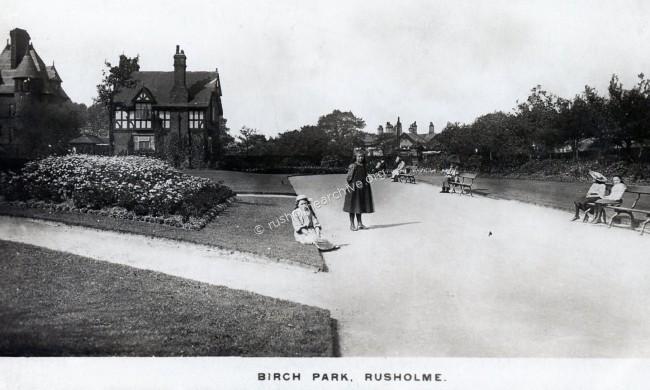
But now some 25 years later the assembled schoolchildren sang the National Anthem to the King & Queen. Almost immediately the procession moved on through the narrow Brighton Grove towards Platt Fields; as William Royle described in his 1914 edition of ‘History of Rusholme’, 'They entered the ancient Brighton Grove with its overhanging trees, and here they were nearer to their subjects than at any other point in their long journey'.
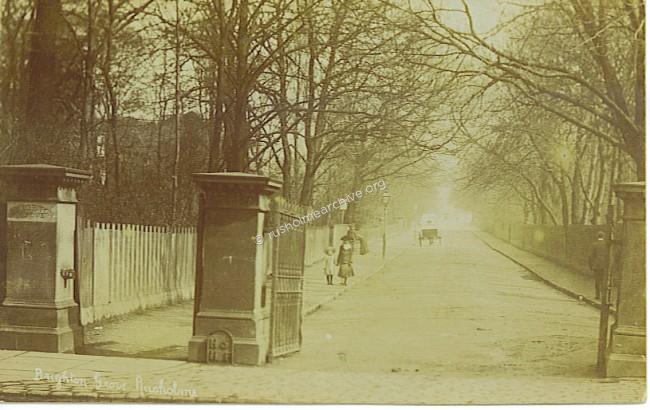
Arriving in Platt Fields there were another 25,000 schoolchildren, who cheered as the mounted police arrived, then cheered the Lord Mayor, the Life Guards and finally the King and Queen.
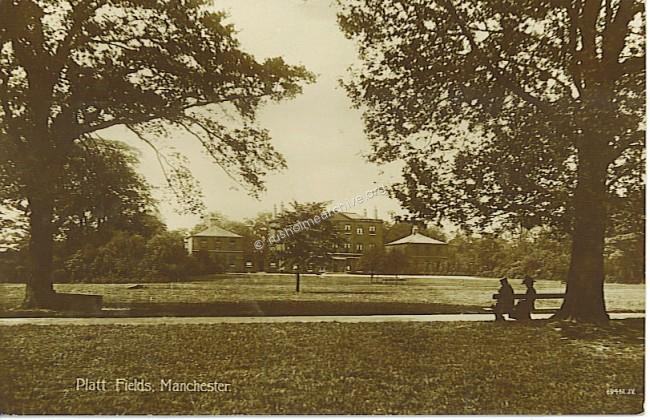
The children struck out together and sang the verse splendidly and then waved red, white & blue handkerchiefs. The local paper reported that “To one side of the park an area of had been set aside for invalids and cripples(sic), some in wheelchairs and others that were so infirm they were only able to see the Royal couple by raising mirrors and looking at the image”. The local paper also reported this part of the occasion by reporting that, “The King and Queen noticed the invalids at once and with a ready sympathy turned towards them and acknowledged their feeble salutations!”
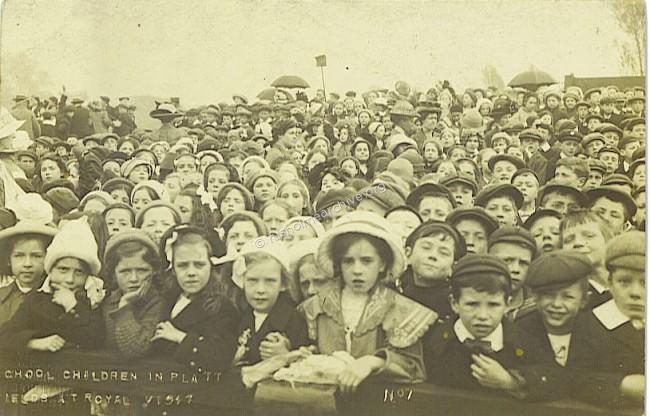
The King had requested throughout their visit that there should not be any public decorations along the route but many homes and shops had put up decorations. After the Royal procession had moved out of Platt Fields it proceeded north along Wilmslow Road towards Manchester where a lunch awaited them at the Town Hall. The procession paused for a moment on Wilmslow Rd at the junction of Claremont Road, this being right opposite the Rusholme Conservative Club, (Number 203 Wilmslow Rd, now the HSBC bank), and here the Conservative club members certainly displayed their patriotic fervour with the display in the postcard below.
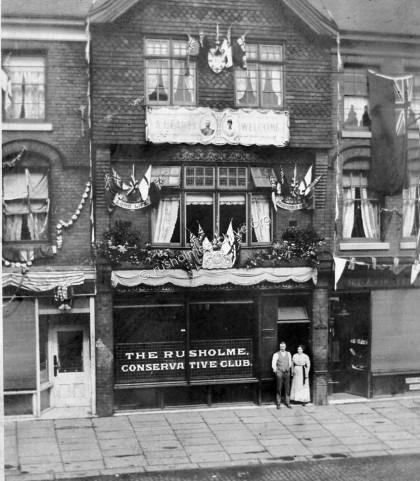
King George V visited Rusholme again in March 1920, this time to meet soldiers who had been injured during the first world war and who were still being cared for at Grangethorpe Hospital. This visit is covered on the page about Rusholme Military Hospitals.
